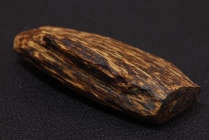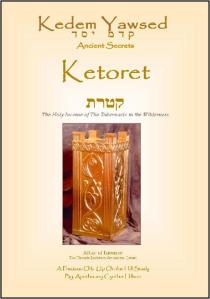Dear Friends,
It is Yom Kippur 5779/20 Sept 2018. I felt is was appropriate to revisit what I wrote in my Esther’s Days of Purification book that I published in 2010.
May the words that I penned be encouragement to you today.
Hugs,
Cynthia (Contact info at the bottom of this blog.)
Forgiveness & Releasing Guilt ~ Esther’s Days of Purification
by Apothecary Cynthia Hillson ~ Copyright 2010 ~ All Rights Reserved
Forgiveness is one of the most beautiful words in our human vocabulary. Often it begins with forgiving ourselves for our own short comings towards our loved ones, family and friends. Forgiving others, those who we perceive as having done us wrong, often takes great effort and determination. Everything in us resists it even though we have read and heard Matthew 7:7 hundreds of times. But forgiveness is vital to our lives if we truly want to be the queen. It brings deep cleansing and emotional release. Much pain and unhappy consequences would be avoided if we all could learn the meaning of true forgiveness.
Forgiveness is needed in three ways; forgiving ourselves, forgiving others and asking for forgiveness from our Heavenly Father for where we have erred. Oh, one more, forgiving God when things don’t go the way we want. In my opinion, forgiveness is the very important first step in the purification process. While forgiveness really isn’t defined as an emotion, but as a decision, it often is an emotional decision.
There is a close link between purification and sanctification. One Hebrew word for purification is taw-hare ~ to wash, to cleanse, become bright, purify and become sound and clear, be unadulterated or polluted, uncontaminated; morally innocent or holy like a Levite (Priest). We also find purity in the Hebrew word for sanctification, kodesh.
Strong’s word H6942 qodash kaw-dash’
A primitive root; to be (causatively make, pronounce or observe as) clean (ceremonially or morally): – appoint, bid, consecrate, dedicate, defile, hallow, (be, keep) holy (-er, place), keep, prepare, proclaim, purify, sanctify (-ied one, self), X wholly.
As you go through the month of forgiveness, liken yourself to the Children of Israel who left Egypt and traveled 40 years. They got to the brink of the Jordan River only to have to wait three days before going into the Promised Land, after Joshua’s words, “Sanctify yourselves”.
And Joshua rose early in the morning, and they journey from Shittim, and come in unto the Jordan, he and all the sons of Israel, and they lodge there before they pass over. And it cometh to pass, at the end of three days, that the authorities pass over into the midst of the camp, and command the people, saying, `When ye see the ark of the covenant of Jehovah your God, and the priests, the Levites, bearing it, then ye journey from your place, and have gone after it; only, a distance is between you and it, about two thousand cubits by measure; ye do not come near unto it, so that ye know the way in which ye go, for ye have not passed over in the way heretofore.’ And Joshua said to the people, `Sanctify yourselves; for to-morrow doth Jehovah do in your midst wonders.’ And Joshua spoke unto the priests, saying, `Take up the ark of the Covenant, and pass over before the people;’ and they take up the Ark of the covenant, and go before the people. And God said unto Joshua, This day I begin to make thee great in the eyes of all Israel, so that they know that as I was with Moses I am with thee. Joshua 3:1-7
Hmm, three days . . . I wonder if Esther was reflecting on this part of her heritage when she instructed Mordecai to have all of the Jews fast and pray for three days. Esther 4:16 (I need to note that the fast of Esther included water. The fasting of “drink” can be found in the Hebrew word shâthâh which means “to imbibe” (literally or figuratively). You find that same word later in Esther 7:1; it’s the word “banquet” and interesting it is also found in 3:15 “And the king and Haman sat down to drink.” Now, these are important “factoids” when you understand some things found in Esther 3:7-15. “It was the first month, the month of Nisan.” (3:7) “Then were the king’s scribes called on the thirteenth day of the first month.” (3:12) and perhaps why we find “two banquets” as it was the season of Passover. You’ll find continued thoughts on this in my book “The Healing Rose: The Rest of the Story of Esther’s Purification” when I share insight on ancient “banqueting”.
Purification and sanctification is linked to fasting and prayer. King David knew this when he wrote Psalm 51 when Nathan the prophet came to him, after he had been with Bathsheba.
Have mercy upon me, O God, according to thy loving-kindness: according unto the multitude of thy tender mercies blot out my transgressions. Wash me thoroughly from mine iniquity, and cleanse me from my sin. For I acknowledge my transgressions: and my sin is ever before me. Against thee, thee only, have I sinned, and done this evil in thy sight: that thou might be justified when thou speaks, and be clear when thou judges. Behold, I was brought forth in iniquity; and in sin did my mother conceive me. Behold, thou desires truth in the inward parts: and in the hidden part thou shall make me to know wisdom. Purge me with hyssop, and I shall be clean: wash me, and I shall be whiter than snow. Make me to hear joy and gladness; that the bones which thou hast broken may rejoice. Hide thy face from my sins, and blot out all mine iniquities. Create in me a clean heart, O God; and renew a right spirit within me. Cast me not away from thy presence; and take not thy holy spirit from me. Restore unto me the joy of thy salvation; and uphold me with thy free spirit. Then will I teach transgressors thy ways; and sinners shall be converted unto thee. Deliver me from blood-guiltiness, O God, thou God of my salvation: and my tongue shall sing aloud of thy righteousness. O Lord, open thou my lips; and my mouth shall show forth thy praise. For thou desires not sacrifice; else would I give it: thou delights not in burnt offering. The sacrifices of God are a broken spirit: a broken and a contrite heart, O God, thou wilt not despise. Do good in thy good pleasure unto Zion: build thou the walls of Jerusalem. Then shall thou be pleased with the sacrifices of righteousness, with burnt offering and whole burnt offering: then shall they offer bullocks upon the altar. Psalms 51:1-19
King David pleaded for forgiveness when he said “Purge me with hyssop, and I shall be clean.”
Myrrh and hyssop have anti-septic properties known to clean deep wounds. Both are purifying and bring cleansing to our brokenness. The cleansing of saying I am sorry, and truly meaning it, is the very essence of forgiveness. When we ask forgiveness of God and others it restores us to our original standing with God.
In Jewish life, every day except Shabbat, during the Amidah (morning prayer), forgiveness is included. This prayer could be inspiration for us each day.
Forgive us, our Father, for we have erred; pardon us, our King, for we have willfully sinned; for you pardon and forgive. Blessed are You, Hashem (God), the gracious One Who pardons abundantly.
On Yom Kippur, The Day of Atonement, a prayer known as Al Chet is recited. Many times I’ve experienced being in Jerusalem on this holiest day of the year. On one occasion, I had made a tallit (Jewish prayer shawl) of the nations during the season that lead up to traveling to Israel. I had used small flags of the world on one side, and the other side was the large flags of the US and Israel. I had completed every part of the project except for the tying of the fringes called the tzit-tzit. I wanted to add an additional spiritual meaning of the project, so I took the tallit to Israel with me. On Yom Kippur I hiked up to Mt. Scopus. I wanted a view of the Old City as I recited the complete Yom Kippur prayers. I was repenting to God on behalf of America and the nations against Israel. Upon completion of the Yom Kippur prayers, I finished the tallit by tying the fringes.
When you say the Al Chet, it is important for you to recognize yourself as a sinner. Even with the atoned blood of Christ over our lives, remembrance and introspection is very much needed in our hearts. Continually carrying this heart-attitude of humility can be found not only on Yom Kippur, but in the yearly freedom celebration of Pesach, The Passover. These holidays carry deep spiritual significance and are important for us to take part of today.
The Yom Kippur prayer, Al Chet, begins with this.
And so, let it be Your will Adonai, our God, and God of our fathers, that you cleanse us of all our unintended sins, and You forgive us of all our intended sins and You pardon us of all our rebellious sins.
Then a list of forty-four wrong-doings is recited. (Space doesn’t allow for me to write them here.) In essence, forgiveness of sin is requested for a wide variety of things we have said and done in both our public and private lives against God and others. This includes foolish speech and impure thoughts. The list even goes as far as having haughty eyes and being jealous. Yes, dear Ones, asking forgiveness just for ourselves goes deep.
During the time when the Temple was intact, Yom Kippur was the only day that the High Priest went into the Holy of Holies to offer up the incense on behalf of the people of God. (Prayers are incense) (The recipe for Ketoret, The Holy Incense, is found in the Siddur. It is composed of 11 ingredients in which myrrh is one. I have a teaching on the Ketoret available. I include the 11 ingredients and the spiritual significance of each linking it to prayer and the Day of Atonement.)
Yeshua Jesus, our Great High Priest was the atonement for our sins. Found in The Lord’s Prayer, as He taught the disciples how to pray, is forgiveness. As we embrace the purification and sanctification of our hearts through forgiveness, His words are more important than ever. (The Lord’s Prayer is found in Matthew 6:9-15 and Luke 11:2-4.)
In the beginning we find how Holy, Pure and Sanctified His Name is, which is the correct meaning of the KJV word hallowed. At the end of The Lord’s Prayer we find forgiveness is given when we ask for it as we forgive others. We’ve known this all along our journey in life, and we realize there are times it can be so difficult. I know I’ve had to do it often, even when my heart was broken and so deeply crushed that I felt like dying would be easier. But the immense release from forgiving others brings enormous freedom. God will help you, if you let Him. Forgiveness puts a dance into your step and a smile on your face. Forgiveness is in the spirit of an Overcomer!
There should be no guilt remaining on your shoulders when you’ve asked for forgiveness from your heavenly Father. If there is, it is important that you release that heaviness of guilt hanging over you. Often, childhood experiences have produced guilt that continues to be dark, emotional threads that overshadow us and weigh us down, keeping our self-esteem low. May I tell you again, there is freedom from guilt when you acknowledge that Christ bore all of your sin and that He can make all things new.
This is so important! We need to make it personal in our lives so that we, as the Bride of Yeshua, will be able to stand with our white garments before Him, and then beside Him, knowing that when God forgives and purifies us from our sin, He also forgets. (Hebrews 8:12, Psalms 103:12, Isaiah 38:17) He did it for you, and He did it for those who have hurt you.
As we look into the properties of myrrh and how it connects with forgiveness, I find it to be linked with our immune system. Myrrh is an immune builder, and Esther’s purification of six months of oil of myrrh was to assure her of a strong immune system. When we haven’t forgiven, we have an internal battle that depletes our immune system, often the result is auto-immune diseases. The reason I tie forgiveness with auto-immune diseases is because in simple terms, they rob you in your blood.
The immune system is the body’s defense against infectious organisms and other invaders. Through a series of steps called the immune response, the immune system attacks organisms and substances that invade body systems and cause disease. The immune system is made up of a network of cells, tissues, and organs that work together to protect the body. The cells involved are white blood cells, or leukocytes, which come in two basic types that combine to seek out and destroy disease-causing organisms or substances.
Our immune system depends on the life of our soul, which is having clean blood. This is found in this Scripture verse, which incidentally is in the chapter about the Day of Atonement.
For the life of the flesh is in the blood: and I have given it to you upon the altar to make an atonement for your souls: for it is the blood that makes an atonement for the soul. Leviticus 17:11
Forgiveness through Jesus Yeshua, and the blood He shed was the atonement for our sin. To become the Queen, the first process is forgiveness. Jesus forgave you, and in accepting His forgiveness and forgiving others, your whole body will benefit and thrive.

Apothecary Cynthia Hillson
E-mail: ApothecaryMamaCynthia@gmail.com
Website www.TheFragrantBride.com
Fragrant Botanical Tour to Israel https://fragrantbotanicaltour.com/
Precious Oils Apothecary Shop is located inside
Main Street Antiques
500 South Main Stree
Mooresville, NC 28115




















